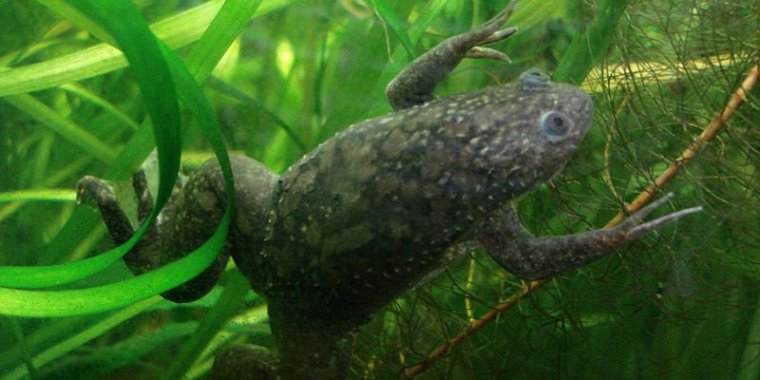| News / Science News |
Scientists Help Frogs to Regenerate Their Limbs with Bioreactor Device
Scientists have designed a device for testing 'electroceuticals,' or cell-stimulating therapies with induce partial hindlimb regeneration in adult aquatic African clawed frogs (Xenopus laevis) by 'kick-starting' tissue repair at the amputation site.
"At best, adult frogs normally grow back only a featureless, thin, cartilaginous spike," says senior author Michael Levin, developmental biologist at the Allen Discovery Center at Tufts University.
The scientists 3D printed the bioreactor out of silicon and filled it with hydrogel -- a sticky glob of polymers. They laced the hydrogel with hydrating silk proteins that promote healing and regeneration, then added progesterone. Progesterone is best known for its role in preparing the uterus for pregnancy, but the hormone has also been shown to promote nerve, blood vessel, and bone tissue repair.
The researchers split the frogs into three groups: experimental, control, and sham. For the experimental and sham group, they sutured the device on the frogs immediately after limb amputation. In the experimental group, the bioreactor released progesterone onto the amputation site. In all cases, they removed the devices after 24 hours.
When they looked at the experimental group frogs at different time points over 9.5 months, they noticed that the bioreactor seemed to trigger a degree of limb regeneration not observed in the other groups. Instead of a typical spike-like structure, the bioreactor treatment resulted in a paddle-like formation closer to a fully formed limb than unaided regeneration could create.
The bioreactor device created a supportive environment for the wound where the tissue could grow as it did during embryogenesis. A very brief application of bioreactor and its payload triggered months of tissue growth and patterning.
The regenerating limbs of the bioreactor-treated frogs were thicker with more developed bones, innervation, and vascularization. The frogs could swim more like unamputated frogs.
RNA sequencing and transcriptome analysis revealed that the bioreactor had altered the gene expression occurring in cells at the amputation site. Genes involved in oxidative stress, serotonergic signalling, and white blood cell activity were upregulated, while some other signaling-related genes were downregulated.
The researchers also observed that scarring and immune responses were downregulated in the bioreactor-treated frogs, suggesting that the added progesterone dampened the body's natural reaction to injury in a way that benefited the regeneration process.
Maybe reproduction, brain processing, and regeneration are closer than we think. Maybe they share pathways and elements of a common -- and so far, not completely understood -- bioelectrical code. (Tasnim News Agency)
YOU MAY ALSO LIKE



